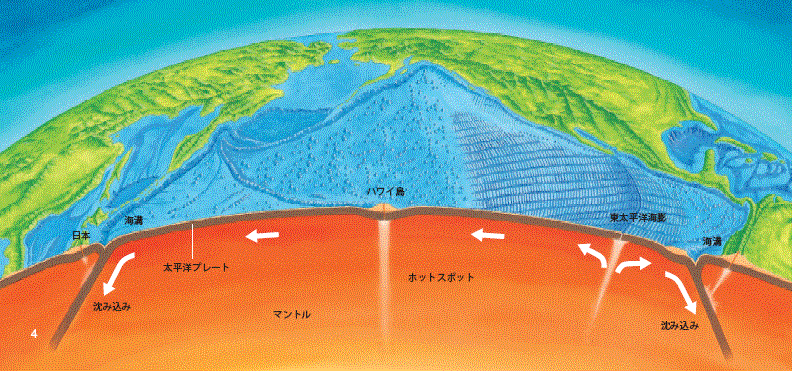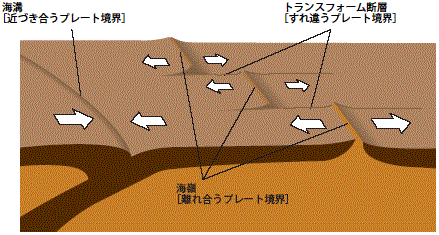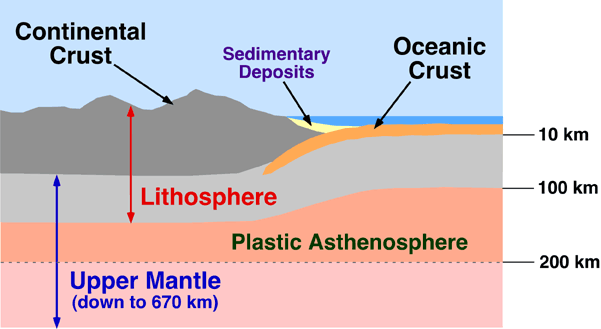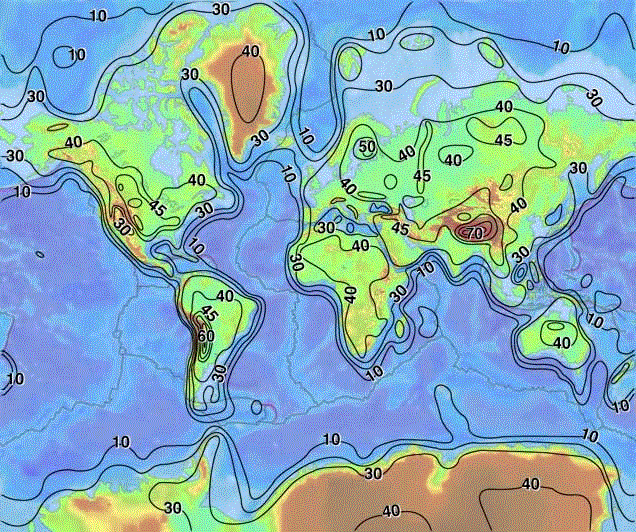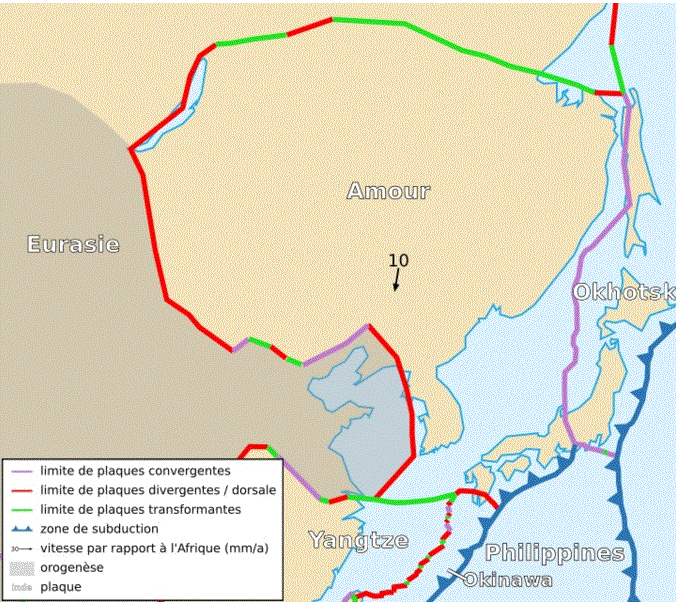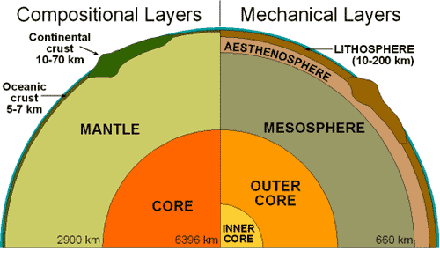 earth structure - The compositional and mechanical layers of the earth. 〔Visionlearning, Inc.によるViosionlearningの中の『Earth Structure』から〕 左側は化学的性質の違いにより、右側は物理的性質(特に硬さ)の違いにより分けられている。つまり、地殻+マントル最上部=リソスフェア(プレート)。プレートの厚さは100~150km程度。 |
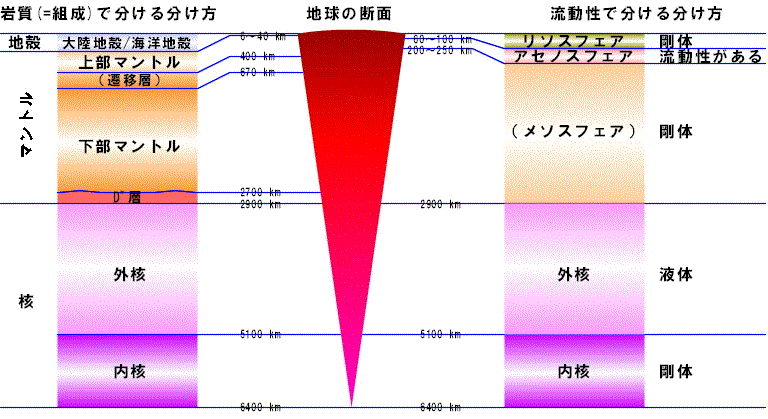 〔産業技術総合研究所 地質調査総合センターによる地質図のホームページの『日本の地質を知るページ』から〕 |
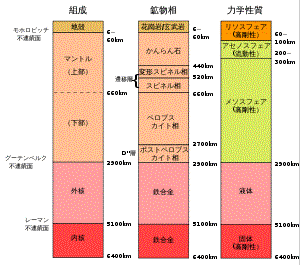 〔フリー百科事典『ウィキペディア(Wikipedia)』の『メソスフェア』から〕 |
| 大陸 | 海洋 | ||||
|
|
30km ↓ |
(6km/s) |
|
||
|
(7km/s) |
7km ↓ |
(プレート) |
|||
|
(7km/s) |
|||||
|
(8km/s) |
↑ 80km ↓ |
||||
|
|
↑ 120km ↓ |
(8km/s) |
|||
|
(7.8km/s) |
|
||||
|
(7.8km/s) |
|||||

